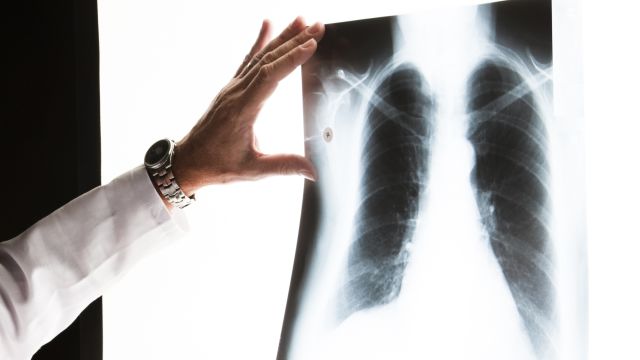Updated on April 10, 2024.
For years, healthcare providers (HCPs) have warned about the risks of cancers of the breast, cervix (lower part of the uterus), ovaries (which store and release eggs during the menstrual cycle) and other female cancers. These cancers take the lives of hundreds of thousands of women each year.
But while the number of deaths from breast cancer has declined, lung cancer has become the leading cause of cancer deaths in women in developed countries. In the U.S. alone, lung cancer kills more women than all cancers of the female reproductive tract combined.
Detailed in their 2015 report, the American Cancer Society (ACS) found that in developed countries 209,000 women died of lung cancer in 2012, compared to 197,000 breast cancer deaths. And over the past 37 years, the number of women diagnosed with lung cancer has increased by a large 98 percent.
Why lung cancer deaths are increasing in women
Many experts, including the ACS report, cite smoking as the main reason for this increase, and smoking remains the number one factor tied to increased risk for the disease.
But smoking isn’t the only reason.
One in five women with lung cancer have never smoked. And women who don't smoke develop lung cancer in higher numbers than men who don't smoke. Fifteen to 20 percent of women who get lung cancer don’t smoke, compared to just 10 percent of men.
And that’s led some experts to consider the possible role of the hormone estrogen in the development of lung cancer in women. In general, people who are assigned female at birth may have higher levels of estrogen than people who are assigned male at birth,
“The thought process is that there are estrogen receptors in lung tissue,” says oncologist Miriam Atkins, MD, of Doctors Hospital and Augusta Oncology Associates in Georgia.
“So on a cellular level you could say it does play a role, particularly because the type of [lung] cancer nonsmoking women get is an adenocarcinoma.” Adenocarcinomas are cancers that affect the lining of glands in the body, like the breasts.
Lack of awareness also contributes
Another reason for the rise in lung cancer deaths in women may have to do with a lack of public awareness about who gets it. Many people may not be aware that nonsmokers get lung cancer. As a result, it often goes undiagnosed until it’s more advanced. Among people who don't smoke, a nagging cough may often be attributed to a lingering cold than a growing cancer.
Symptoms of lung cancer
For lung cancer, the five-year survival rate (percent of people who are alive after being diagnosed with a medical condition) among both men and women is 17.4 percent. According to Atkins, you can greatly improve your chances by learning about the early symptoms of lung cancer and seeing your doctor.
“Pay attention to symptoms,” says Dr. Atkins. “Many people are diagnosed later because sometimes the symptoms can be vague. If you have a cough or cold that doesn’t go away in a few weeks, you need to be seen. Also, if there’s a voice change or you have chest pain, those things can also be symptoms of lung cancer.”
Other lung cancer symptoms include a cough with blood, hoarseness, weight loss or loss of appetite, shortness of breath, fatigue, lung infections that don't go away. and wheezing.
How to protect your lungs
If you smoke, the most important thing you can do to protect your health is to quit smoking, says Atkins. And, if you live with a smoker, ask them to quit.
“I wish my patients understood that even if they don’t smoke and they live with a smoker, their risk is still higher,” says Atkins.
Other things that can protect your lungs include regular exercise as you are able and maintaining a healthy diet rich in fruits, vegetables, whole grains and lean protein, and low in salt, added sugars and saturated fat (which is solid at room temperature, like butter). Other ways to stay healthy include having your home tested for radon, which is known to increase the risk for lung cancer, and avoiding other carcinogens (cancer-causing substances) in the environment such as asbestos, a fireproof mineral that has been used in construction work. Many state and county health departments may provide free home testing kits for radon.
It’s also important to know your risk and talk to your HCP if you’re concerned, says Atkins. “If your doctor isn’t listening to you, find someone else,” she says.
“Keep pressing until someone listens to you, and something gets done.”






